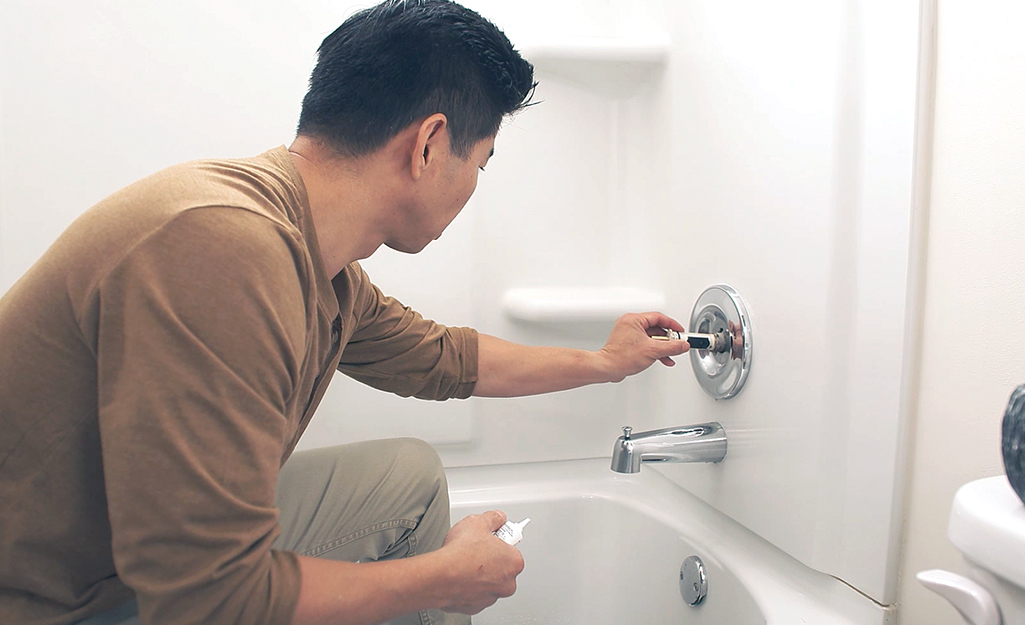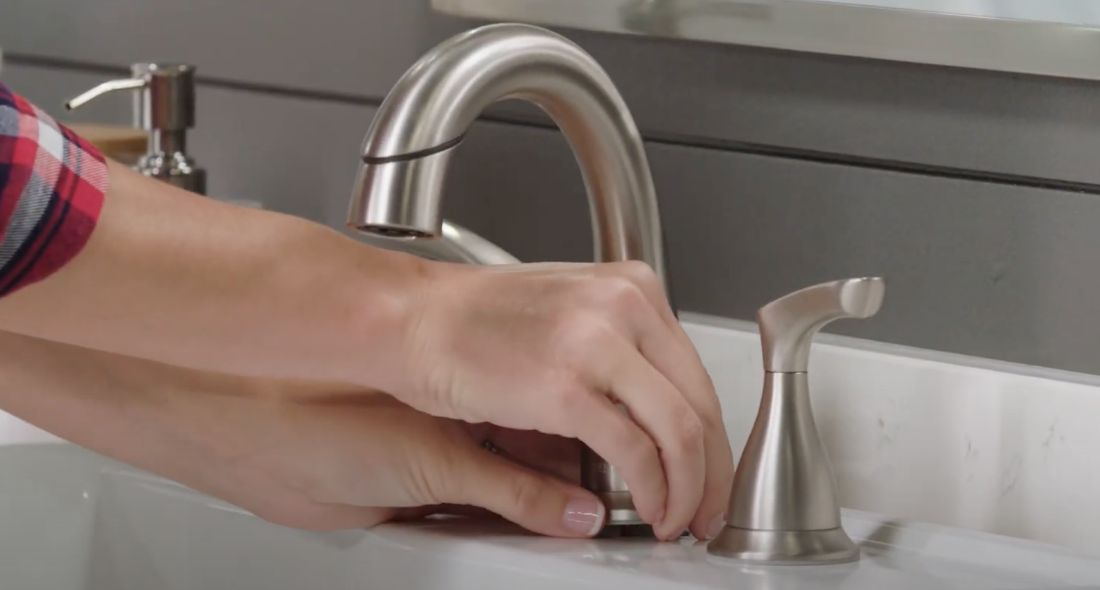Any individual has their personal perception about Water Dripping from Faucet: Why and How to Fix.

Trickling taps could seem like a small aggravation, yet their influence surpasses just the inconvenience of the noise. From wasting water to incurring unnecessary economic prices and health and wellness risks, ignoring a trickling tap can result in various effects. In this write-up, we'll explore why it's crucial to resolve this common house problem promptly and properly.
Wastage of Water
Environmental Influence
Trickling faucets contribute considerably to water wastage. According to the Epa (EPA), a solitary faucet dripping at one drip per second can throw away greater than 3,000 gallons of water annually. This not only pressures water resources however also influences communities and wildlife depending on them.
Financial Expenses
Raised Water Expenses
Beyond the ecological impact, trickling faucets can blow up water expenses substantially. The collected wastage gradually translates into greater energy costs, which could have been prevented with timely repair work.
Possible Residential Property Damage
In addition, extended leaking can bring about damage to fixtures and surfaces bordering the tap. Water build-up can cause discoloration, rust, and also structural concerns if left ignored, resulting in added repair expenses.
Wellness Worries
Mold And Mildew and Mildew Development
The constant existence of dampness from a dripping faucet develops a perfect environment for mold and mold development. These fungis not just compromise indoor air high quality however additionally posture health dangers, specifically for people with respiratory system problems or allergic reactions.
Waterborne Conditions
Stationary water in trickling taps can end up being a breeding place for germs and various other microorganisms, boosting the danger of waterborne diseases. Contaminants such as Legionella microorganisms grow in stagnant water, potentially resulting in major diseases when ingested or inhaled.
Do it yourself vs. Professional Repair service
Advantages and disadvantages of Do It Yourself Repair
While some may try to deal with a dripping faucet themselves, do it yourself fixings come with their own collection of challenges. Without appropriate understanding and devices, do it yourself efforts can aggravate the issue or lead to incomplete repair work, extending the issue.
Benefits of Hiring a Professional Plumber
Employing a specialist plumber ensures that the underlying source of the trickling tap is dealt with successfully. Plumbing technicians possess the competence and equipment to detect and repair tap issues efficiently, saving time and reducing the danger of further damage.
Step-by-Step Overview to Dealing With a Dripping Tap
Tools Required
Prior to attempting to repair a dripping tap, gather the necessary devices, including an adjustable wrench, screwdrivers, substitute parts (such as washing machines or cartridges), and plumber's tape.
Typical Tap Issues and Their Solutions
Determine the type of tap and the certain issue creating the drip. Common issues include worn-out washing machines, corroded shutoff seats, or faulty O-rings. Refer to supplier instructions or on the internet tutorials for detailed advice on repair work.
Safety nets
Normal Maintenance Tips
To prevent leaking taps, execute regular maintenance such as cleaning aerators, examining for leaks, and replacing worn-out parts quickly. Furthermore, think about setting up water-saving devices or upgrading to more efficient fixtures.
Relevance of Prompt Services
Addressing trickling taps as soon as they're noticed prevents more water waste and prospective damage, inevitably saving both water and money in the future.
Effect On Building Value
Perception of Well-Maintained Building
Preserving a residential property in good condition, consisting of resolving maintenance concerns like dripping taps, enhances its viewed worth and value amongst potential purchasers or lessees.
Influence on Resale Worth
Residences with properly maintained plumbing fixtures, including taps, command greater resale worths in the property market. Addressing trickling taps can contribute to a positive impact during residential property evaluations and settlements.
Ecological Responsibility
Specific Contribution to Preservation
Taking duty for repairing trickling faucets lines up with more comprehensive initiatives towards water preservation and environmental sustainability. Every individual's activities collectively make a substantial impact on maintaining precious sources.
Lasting Living Practices
By prioritizing punctual repairs and taking on water-saving practices, people contribute to lasting living techniques that benefit both existing and future generations.
Verdict
Dealing with a trickling tap exceeds plain comfort; it's an important step toward saving water, reducing economic expenses, and safeguarding health and wellness and residential property. Whether through do it yourself repairs or expert assistance, acting to deal with dripping faucets is a tiny yet impactful means to promote accountable stewardship of sources and add to a healthier, a lot more lasting future.
How to Fix a Leaky Faucet: Step-by-Step Repair Guide
A leaky faucet may seem like a simple annoyance, but if it's not fixed promptly, that leak could cost hundreds to potentially thousands. From water damage to mold, mildew, and high water bills, even a tiny leak can be catastrophic if left unattended. Damage like this can even affect the overall value of your home, so it's important to take the right approach for leaky faucet repair. You may need the help of a plumber in some cases, but we've got a few tips you can try on how to fix a leaky faucet before calling the pros.
Four Faucet Types
When you're learning how to fix a leaky faucet, the first step is knowing what kind of faucet you're working with! There are four common types.
Cartridge Faucets
Cartridge faucets come in one- or two-handled varieties. In one-handled cartridge faucets, hot and cold water combines in a single cartridge. In the two-handled versions, hot and cold water are controlled separately and mixed in the faucet.
Ball Faucets
Ball faucets have a single lever you push up and down to adjust the pressure and rotate to change the temperature. A slotted metal ball controls the amount of water allowed into the spout.
Compression Washer Faucets
They're the oldest type of faucet, but they're still used in many homes — especially older ones. Compression faucets have two separate handles that, when turned, raise or lower the washer that seals a water valve. This valve stops water from flowing through the faucet when it is turned off.
Disc Faucets
Disc faucets rarely need to be repaired due to their maintenance-free design. The water flow is controlled by two discs — the upper one raises and lowers against a fixed lower disc, creating a watertight seal. If your disc faucet starts leaking, you may need to replace the seals or clean residue buildup from the inlets.
Fixing a Leaky Faucet
Step 1: Turn Off the Water
Whether you're learning how to fix a leaky bathtub faucet or how to fix a leaky kitchen faucet, always turn off the water supply to your working area when you're fixing a leak. The last thing you want is a flood added to your list of things to fix.
Look for the shutoff valves below your sink or around the tub and turn them clockwise to stop the water flow. If your faucet doesn't have shutoff valves, you may need to turn off the water for the whole house. Check to make sure it's off by turning the faucet on. If nothing comes out, you're ready to start the repair.
Step 2: Take Apart the Faucet
How you disassemble your faucet depends on the type of fixture you have. You can use a flathead screwdriver to remove the caps on top of the handle or handles for cartridge and compression faucets. Inside, you should see handle screws. Unscrew these with a screwdriver to remove the handle.
Disc- and ball-style faucets will typically have an inlet screw near the handle, and removing that will reveal the interior of the faucet.
Detach the Valve Stem
For cartridge- and compression-style faucets, you'll see the inner valve stem or cartridge once you remove the faucet handles. If you have a compression faucet, unscrew the brass valve stem. If you have a cartridge faucet, pull out the cartridge. If your cartridge has been in place for a while, it may require some tools or extra force to remove it due to mineral deposits.
Examine and Replace Parts
Once you've removed the parts, check them out to confirm what needs to be replaced. You may see corroded rubber washers, O-rings, stems, or cartridges. On a ball-style faucet, check the seats and springs for damage.
If you need to repair a leaky disc faucet, check the inlet and seals on the lower disc.
Once you determine what parts must be replaced, visit your local hardware store. Bring the damaged parts with you to ensure you can purchase the correct components to replace them.
Clean Valves and Faucet Cavity
If you've removed a stem or cartridge, you may notice mineral buildup in the faucet's threads. Use white vinegar to clean the valve seat by soaking it for a few minutes, then scrub it away with a soft toothbrush and rinse with warm water. You can also clean the interior of the faucet in the same way.
Reassemble the Faucet
Once your faucet is cleaned and the required parts have been replaced, it's time to reassemble it. Put the pieces back together and slowly turn the water supply back on. Doing this slowly is crucial because too much initial water pressure can damage the new hardware you've just installed.
https://homewarranty.firstam.com/blog/how-to-fix-leaky-faucet

I found that review about What Causes Leaky Faucets & How To Fix Them when surfing the web. Are you aware of another person who is occupied with the subject? Why not promote it. I appreciate your readership.